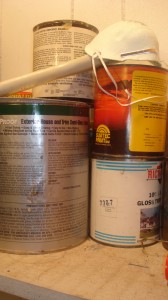by sbouie | Mar 30, 2016
 Home ownership means different things to different individuals.
Home ownership means different things to different individuals.
- “We feel that owning our own house is a sign of wealth.”
- “We would purchase a house so our kids would be in the right school zone.”
- “It was property we could sell once the children had moved out. We could down size and sell the house and use the funds toward retirement.”
You might purchase a home for one or all of the reasons listed above. Some people want the comfort but not the issues of lawn maintenance and repairs. Many of us have very busy schedules and do not want the hassle of maintenance.
In some cities you have the rising cost of leasing an apartment. It can be cheaper to purchase a house than rent an apartment. Always factor in utilities, lawn care, repairs, insurance and taxes. If you are buying your house, the insurance and taxes can be included with the mortgage.
Keep in mind that the interest you paid on your mortgage and taxes can be claimed on your income taxes. Your rent payment cannot be claimed on your income taxes. Equity also builds up in your home. Even if you are renting you should have renter’s insurance.
When renting, you have the freedom of movement once your lease has expired. If you own your house, you can rent it or sell it, but you would need to move.
Owning your home gives you freedom to decorate your home as you please. If you do not abide by the restrictions of your apartment lease, you could forfeit your deposit.
Whether you decide to own or rent is your personal choice. Make the right decision for you.
by Elizabeth | Sep 30, 2013
So now the weather is cooling off and you’ve been thinking about doing something to give your home a much-needed facelift. Perhaps now you’re thinking you want to add some seasonal touches. The easiest way to spruce up a home is with a coat of paint. Painting will give the home an updated, refreshed look and the home will immediately seem more defined and welcoming.

Spruce up your house with a fresh coat of paint.
The best time to paint the interior of a home is in the fall or spring. The cooler weather makes working both inside and out much more pleasant. Cooler weather also allows you to ventilate the rooms by opening up windows. When it comes to the job itself with so many paint choices, which one should you choose? Lead-based paints seem to have been eliminated from the US market, however, there are still other issues with paint that need addressing.
According to the Green Builders Coalition, all paint comes in three parts: pigment that gives it color; the binder, or resin, that makes the pigment stick when the paint is applied and forms a solid layer of paint; and the carrier, or solvent, that keeps the paint in liquid form and evaporates once the paint is exposed to air. All of these contain different chemicals. Other substances or chemicals may be added to paint to give it special characteristics, such as mold resistance or moisture resistance.
One additive besides lead that has received much attention recently is volatile organic compounds, or VOCs. Why are VOCs in paint in the first place? They are the “glue” that keeps the pigment and the binder or resin in a liquid solution long enough for the paint to be applied, then they conveniently evaporate so the paint can dry. Therefore, VOCs do serve a necessary function in paint.
Why is there a major concern over high-VOC paints? Like anything that produces high vapors, paints that have high-VOCs may cause or trigger respiratory problems. Consumers need to be aware that, although evaporation is greatest during and right after application, it may continue at lower levels for months. The emitted gases mix with the air in the room, exposing occupants to chemicals that can cause short- and long-term respiratory problems.
The solution is not to leave the house unpainted, but to find low- or no-VOC paints, which are now sold side-by-side with conventional high-VOC paints. Most home improvement stores carry these; consumers just have to do their homework. While there are no building code limitations on use of low-VOC paints, it is imperative that consumers find out more about the product before they select it. The EPA website, http://www.epa.gov/iaq/voc.html#Health_Effects, offers more information on VOCs in general. The National Association of Home Builders also has posted a guide consumers can use to select low-VOC paint on their website: http://www.toolbase.org/Technology-Inventory/Interior-Partitions-Ceilings/low-voc-paints.
Sprucing up your home can be very exciting and painting your home is a great way to express your individuality and ensure your home reflects your sense of style and personality. For more information on maintaining your home, visit the University of Florida/IFAS Extension publications website at http://edis.ifas.ufl.edu/topic_homes.
by Shelley Swenson | Jul 23, 2012

Photo by Les Harrison, Wakulla County Extension Director
Welcome to the Florida summer!!! Feeling the heat? No pool to cool off in? Running your air conditioner and then feeling blue when the bill arrives? Let’s review some basics in energy-efficient use of your air conditioner. Perhaps you and your family could make some small changes that could result in money being saved. Quick Facts: Did you know that…..
- Heating, ventilation and air conditioning (HVAC) account for more than 40% of your utility bill?
- For every degree setting below 78˚F, you spend up to 8% more in cooling costs?
- Upgrading your system can reduce your air conditioning costs by a significant amount. Is it time to consider doing so?
Short-term solutions to improve the efficiency of your existing system include…..
- Set your thermostat at 78˚ F or higher.
- Use bath and kitchen fans sparingly when the air conditioner is operating.
- Inspect and clean both the indoor and outdoor coils. The indoor coil in your air conditioner acts as a magnet for dust because it is constantly wetted during the cooling season. Dirt build-up on the indoor coil is the single most common cause of poor efficiency. The outdoor coil also must be checked periodically for dirt build-up and cleaned if necessary.
- Shade east and west windows.
- Delay heat-generating activities, such as dishwashing and drying clothes in a clothes dryer, until the evening on hot days.
- During most of the cooling season, keep the house closed tight during the day.
- Try not to use a dehumidifier at the same time your air conditioner is operating. It increases the cooling load and forces the air conditioner to work harder.
- Consider installing ceiling fans to circulate the air more effectively. The improved circulation will make you feel cooler.
- Install a programmable thermostat. You can then schedule the time blocks during which your heating or air-conditioning system operates. As a result, you can set the equipment to more economical settings—such as lower temperatures in winter while you are asleep or when you are away from home. Choose one that can store and repeat multiple daily settings, so that you can have both a workday and a weekend heating/cooling timetable.
We have such great resources from our UF/IFAS Specialists available to you. This article was adapted from Factsheet FCS 3262 Energy Efficient Homes: Air Conditioning This publication includes information on understanding terms used in the industry, how to purchase a new unit, and questions you should be prepared to ask and answer when working with a HVAC representative. Contact your County Extension Family and Consumer Sciences Agent with further questions or for a copy of this factsheet. For additional factsheets on energy efficiency and other topics, visit http://edis.ifas.ufl.edu.
Author: Shelley Swenson, Family and Consumer Sciences/EFNEP Agent, UF/IFAS Wakulla County Extension

Shelley Swenson
UF/IFAS Extension Wakulla County
Family and Consumer Sciences/EFNEP Agent
 Home ownership means different things to different individuals.
Home ownership means different things to different individuals.


